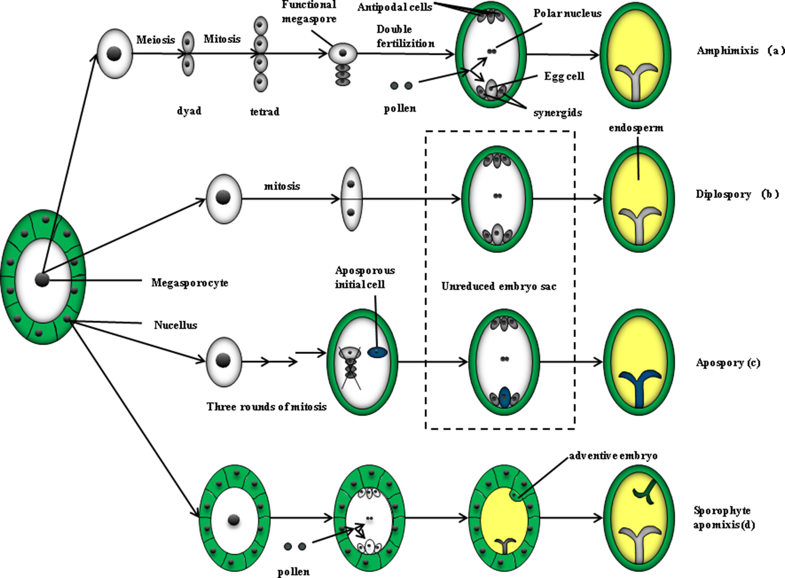Apomixis as asexual seed formation is seen as a phenomenon in which a plant bypasses the most fundamental aspects of sexual reproduction (meiosis and fertilization) to form viable seed. Plants can produce seeds without fertilization, and the seed genotype is consistent with the female parent. The establishment of apomictic technology would be revolutionary for agriculture and for food production as it would reduce cost, breeding times and also avoid many complications typical of sexual reproduction e.g. incompatibility barriers, and of vegetative propagation e.g. viral transfer. This concept can best be explained in agricultural science. Looking into agriculture, apomixis has the potential to transform plant breeding, allowing new varieties to retain valuable traits through asexual reproduction. The production of seeds in the absence of sexual union is considered the holy grail of plant biology. Many families naturally show particularly high frequencies of apomixis, examples are Poaceae and Melastomataceae. Sexual reproduction is of old in homosporous ferns, and the transition to apomixis needs the evolution and alternation of two distinct phenomena: apogamy and diplospory. These represent the spontaneous development of a sporophyte without fertilization (apogamy) and avoidance of meiotic reduction during sporogenesis (diplospory). Apomictic mechanisms are generally subdivided into two categories and classified as sporophytic or gametophytic, based on whether the embryo develops through a gametophyte (embryo sac) or directly from diploid somatic (sporophytic) cells within the ovule.

So, study as shown that most apomictic plants retain some potential for sexual reproduction, which is called facultative apomixis. And this brings about apomixis genetically identical offspring and this allows a crop to retain complex features that are of value and also the production of seeds with superior traits, directly from the mother plant. Through these, the seed production cycle would be shortened and the high cost of producing hybrid seeds are been eliminated. Although apomixis is seen as been potentially essential for crop breeding and has been studied extensively, the genetic regulation of apomixis is still bringing doubt and at the same time, the results obtained in studies of the apomictic mechanism are not always consistent.
How to determine apomixis
In other to determine the mechanism of apomixis, the first step is to find and identify which plants have apomictic features. Plants can produce fertile offspring after blocking pollination or emasculation, and it still can be initially determined that the material studied is apomictic. So, apomixis is so paramount in agriculture.